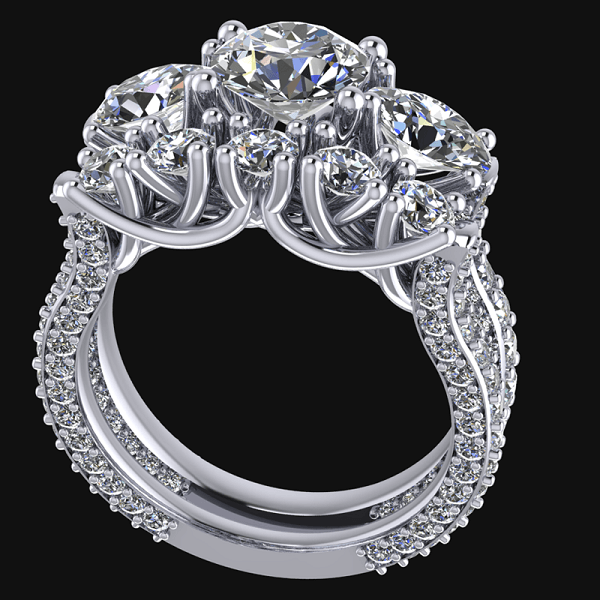Difference Between Natural and Lab Grown Diamonds
If you’re shopping for Natural and Lab Diamonds, you have plenty of options. You can choose your ideal diamond size, shape, color, and quality-- then, nowadays, you can also choose how you’d like your diamond to have been made. Thanks to advancements in technology, lab-grown diamonds are more available than ever, allowing people to freely choosing the Difference Between Natural and Lab Grown Diamonds
Difference Between Natural and Lab Grown Diamonds
Diamonds hold a special place in jewelry, but today, buyers can choose between natural and lab grown diamonds. The difference between natural and lab grown diamonds is often debated, with both offering unique qualities. In this guide, we’ll break down their differences in formation, price, appearance, and more.
Lab Grown Diamonds
Lab grown diamonds are created using advanced technology that replicates natural diamond formation. There are two main methods: High-Pressure High-Temperature (HPHT) and Chemical Vapor Deposition (CVD).
- HPHT Method: This method mimics natural formation within the Earth. A small "diamond seed" is placed in a chamber filled with carbon. Under extreme pressure and heat, the carbon melts and forms a diamond around the seed.
- CVD Method: This method also begins with a diamond seed. The seed is placed in a vacuum chamber filled with carbon-rich gases. The gases are heated, causing the carbon to bond layer by layer, creating a diamond.
Despite being lab-made, these diamonds have the same chemical structure as natural diamonds. Thus, the difference between natural and lab grown diamonds lies in their origin, not physical properties.
Natural vs. Lab-Grown Diamonds: Pricing
Pricing is a significant difference between natural and lab grown diamonds. Generally, lab grown diamonds cost up to 30% less than natural diamonds of the same qualities. This makes lab grown diamonds attractive to budget-conscious buyers. For example, you may afford a larger lab grown diamond at the same cost as a smaller natural diamond.
The affordability of lab grown diamonds also appeals to those seeking a sustainable option. These diamonds offer the same quality without the environmental impact of mining.
Natural vs. Lab-Grown Diamonds: Visual Qualities
A common question is whether there is a visible difference between natural and lab grown diamonds. The answer is no. Both types share the same sparkle, brilliance, and clarity. Even trained gemologists cannot differentiate them with the naked eye. Specialized equipment is needed to detect formation differences.
Both natural and lab grown diamonds are graded by the same standards. The four C’s—cut, color, clarity, and carat weight—apply to both, ensuring high-quality grading.
Natural vs. Lab-Grown Diamonds: Color Options
Color is another notable difference between natural and lab grown diamonds. While natural diamonds come in many colors, lab grown diamonds are currently limited to shades like yellow, pink, and blue. This is due to evolving technology, which is not yet advanced enough to create all colors.
However, colored natural diamonds are rare and more expensive. Colored lab grown diamonds, by contrast, offer an affordable option for those seeking a unique stone.
Natural vs. Lab-Grown Diamonds: Sustainability and Ethics
Sourcing is another key difference between natural and lab grown diamonds. Natural diamonds are mined, which can impact the environment and raise ethical concerns. In contrast, lab grown diamonds are made in a controlled environment, eliminating the need for mining.
Many consumers choose lab grown diamonds for their ethical production and lower environmental impact. Knowing that no mining was involved can be a major deciding factor.
Natural vs. Lab-Grown Diamonds: Not Diamond Simulants
Both lab grown diamonds and natural diamonds are real diamonds. The difference between natural and lab grown diamonds lies only in formation, not composition. While lab-grown options are sometimes called "synthetic diamonds," this doesn’t mean they are fake. The term "synthetic" simply refers to their lab creation. Simulants, like cubic zirconia or moissanite, are not true diamonds.
Final Thoughts on the Difference Between Natural and Lab Grown Diamonds
The difference between natural and lab grown diamonds lies mainly in their formation and cost. However, they have identical physical and visual properties. The choice between them is personal. Some prefer natural diamonds for their history, while others opt for lab grown diamonds for ethical reasons.
At BVW Jewelers, we offer both natural and lab grown diamonds. Whether you’re seeking an engagement ring, studs, or a colored stone, we have the right choice. Visit our showroom to compare your options and receive expert guidance. Explore Natural and Lab Grown Diamond Collections





